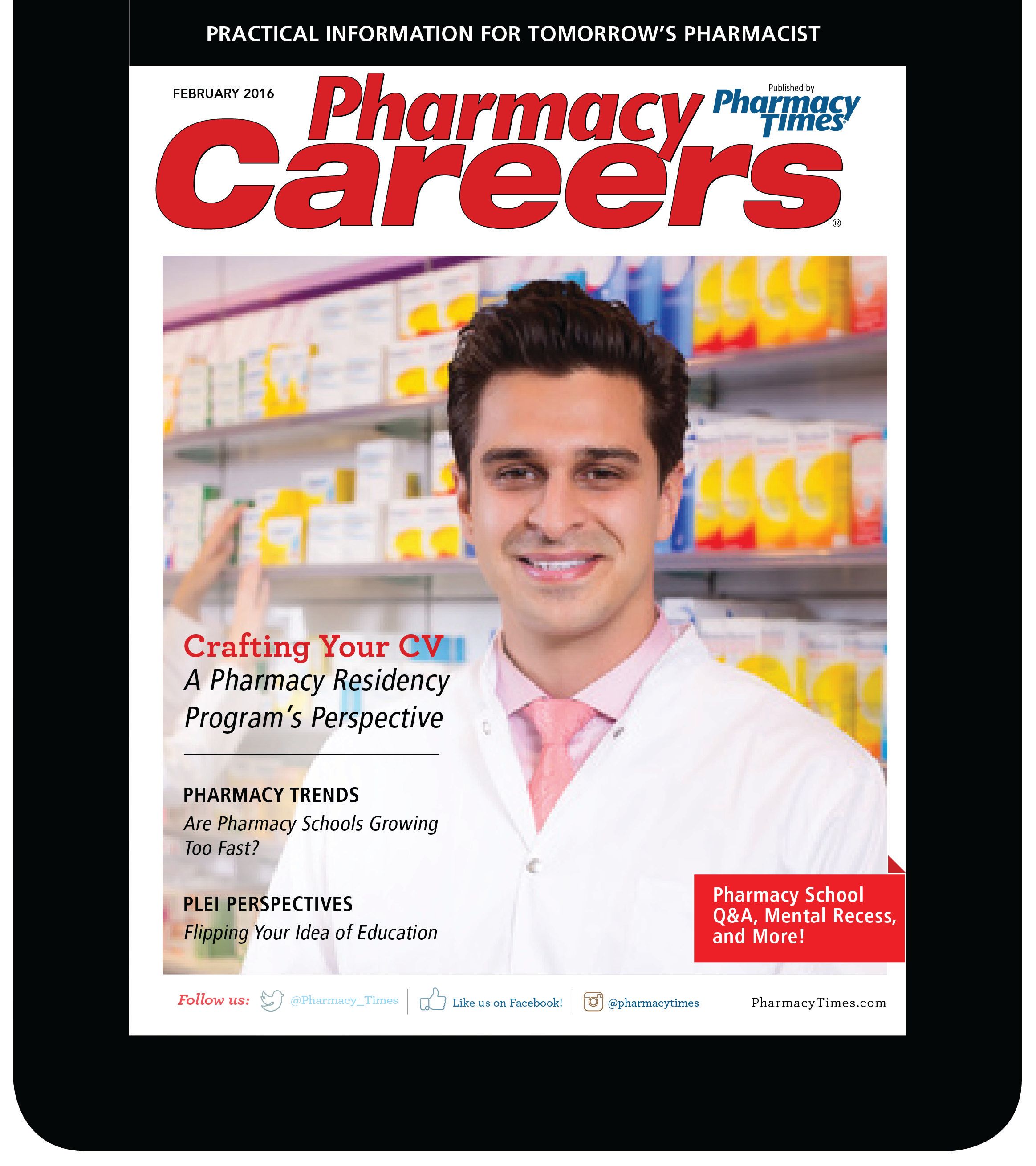Publication
Article
Pharmacy Careers
What Pharmacy Students Need to Know about MTM
Medication therapy management has become an important buzzword in the world of pharmacy.



Medication therapy management (MTM) has become an important buzzword in the world of pharmacy. Theoretically, MTM serves as a route of communication between pharmacists and patients, allowing patients to gain insight and autonomy over the medications they are prescribed, as well as the opportunity to take an active role in their own health care. Students currently enrolled in colleges of pharmacy across the country are being taught how to conduct an MTM session with a patient and how such a session will contribute to improved health outcomes.
Community pharmacists are the most accessible pharmacists, and they are at the forefront of the MTM movement. MTM offers patients the potential to take part in their own recovery or maintenance of a chronic disease, but how effective is MTM in a real-life retail setting?
As pharmacy students who are hopeful about the potential of using MTM in our future careers, we conducted interviews with pharmacists in a variety of community settings to explore just how prevalent the practice is in the average workday. In our interviews, we aimed to address the perceived barriers, successes, goals, and areas for improvement related to MTM. Below are the interview questions along with the most prevalent findings.
What has been successful in your MTM procedures, outcomes, and process?
All of the pharmacists interviewed were working on targeted intervention programs and quick interventions, specifically targeting compliance and adherence check-ups. Automatic refill is an easy way for pharmacies to help with monthly compliance. As one pharmacist noted, however, although we can get patients to come pick up their medications, it is hard to ensure that patients are actually taking their medications once they pick them up.
MTM has been incorporated successfully into the routine counseling session at a few stores. When patients pick up new medications is an ideal time to schedule a medication review session to help answer any of their questions. For one pharmacy, technicians are highly utilized to help identify new targeted intervention programs and assist in the comprehensive medication review preparation by compiling lists of medications that patients are taking.
How has MTM led to improved patient compliance, better pharmacist—patient relationships, and improved disease state management?
MTM has been shown to help improve the pharmacist—patient relationship. Patients appreciate pharmacists going the extra mile and taking an interest in their well-being, the pharmacists interviewed noted. These relationships are most evident when patients are open to the experience, however, as it is still a challenge to obtain their participation. MTM is also a way to help pharmacists better understand how to help patients manage their medications, and the outcomes from one encounter can help improve the next one.
What are the biggest barriers to providing MTM services?
A recurring challenge among community pharmacies was the lack of time to provide MTM services. With increasing demands on pharmacists, it becomes much harder to take time away from the work flow to talk extensively with patients about their medications. It may even be difficult to coordinate an appointment time with a patient. Some pharmacists cited a lack of available staff within the pharmacy as a perceived barrier to MTM. Pharmacists who feel they do not have enough support to cover their normal responsibilities while they are gone are not likely to provide quality MTM services, if any at all. Other pharmacists pointed out difficulties on the patient end, such as patients’ willingness to come into the pharmacy for an MTM session, their understanding of what MTM is, their busy schedules, and their wariness to discuss their complete medical history with someone they may not know very well.
What can be changed to improve MTM to make it more successful?
Multiple pharmacists suggested that their staff, including interns and technicians, could be better utilized in performing MTM services. This may involve making phone calls, scheduling appointments, and making other preparations that do not involve clinical expertise. Another proposition was to have a pharmacist on staff whose sole job is to provide MTM services. Other suggestions involved improving the organization or structure of the MTM system within the pharmacy, such as including notes in the computer system that will come to the pharmacist’s attention at pickup and remind the pharmacist to provide MTM services or follow-up at that time.
Suggestions involving improvement on the patient end of the MTM encounter included working to develop patient awareness and understanding of MTM. Another idea was to have the patient—pharmacist interaction lead MTM sessions rather than having the sessions driven by insurance policies. One pharmacist noted that (excluding comprehensive medication reviews) shorter, more frequent interactions with patients may be more successful than longer ones. In addition, interactions that can be completed on the phone can help reduce the number of additional visits the patient makes to the pharmacy.
How can pharmacy students get involved with MTM?
Pharmacists unanimously agreed that students are most useful in the activities that exist in the “in-between” periods of actual MTM sessions with patients. The primary activity in which students can gain MTM experience is in making phone calls to patients, either before or after an MTM session with the pharmacist. Because pharmacists in retail settings are often busy with the daily activities of their work, students are more able to take the time necessary to talk with patients and arrange MTM or follow-up appointments.
In addition to phone calls, pharmacy students are useful in documenting the MTM session. The documentation process for MTM is infamously time-consuming, but students have the time required for accurate and thorough documentation. Such a process is also beneficial to students because it familiarizes them with MTM documentation programs and disease state guidelines.
Students may also play a part in MTM by assisting the pharmacist in preparing for the session. This may involve considering the patient’s profile, medications, medication history, adherence, past and present disease state(s), and notes from physicians. Perhaps most exciting, pharmacy students, if given the opportunity to become an intern at some major pharmacy chains, may take part in all MTM activities if properly trained.
What is the goal of MTM?
Pharmacists across various retail settings agree that MTM, although tedious and often difficult to incorporate in a busy pharmacy setting, is a progressive movement. It serves not only to increase pharmacists’ role as health care providers, but perhaps more importantly, it gives patients greater autonomy and understanding of their own health. With greater understanding, patients are more likely to play an active role in their health care and be more compliant.
Giving patients greater access to their pharmacist strengthens the pharmacist—patient relationship and increases patients’ willingness to take an active role in their personal health. Regardless of the advancing role of the pharmacist, the ultimate advantage of MTM is to obtain better patient outcomes as a result of increased patient communication and education.
MTM tips
As pharmacists, it is our job to help patients understand what their medications are for, why they should take their medications, and how they can make healthy lifestyle choices to help manage their disease states. Our role is evolving into a more clinical one in which we are not exclusively dispensing medications, but are also counseling patients on medications and various disease states.
Because MTM can seem overwhelming and somewhat unrealistic for some pharmacists, we would like to conclude with some tips for pharmacists to help ease MTM into their busy schedules:
Clearly state your name and your intent when initiating an encounter. This will help patients understand the purpose of MTM and will let them know why they should trust you with their health information. Your session will be much more efficient if you do not have to spend as much time convincing patients they will benefit from MTM.
Involve your technicians and interns in the preparation and documentation of MTM services. Dividing up tasks will not only give you more time to focus on your other responsibilities in the pharmacy, but it will also give your students valuable experience for the future when they perform MTM services as a pharmacist.
Create a system to manage medication reviews and claims in progress by printing them out and organizing them into a binder. Document the call attempts made to the patient, and make it a priority to check for new claims online and follow up on claims in progress each day. MTM should become a part of the daily pharmacy routine.
For students interested in becoming more involved with MTM, we recommend these tips:
1. Shadow your pharmacist while he or she is conducting an MTM session with a patient; take notes on how the pharmacist arranged time away from the counter to accommodate the appointment with the patient.
2. Offer to document the MTM notes from the session for your pharmacist and become familiar with the program your pharmacy utilizes.
3. Offer to counsel the patient during a follow-up appointment based on your pharmacist’s notes from a prior MTM session. Not only will you gain a greater understanding of how to navigate an MTM program, but you will also have a great opportunity to practice your communication skills.







